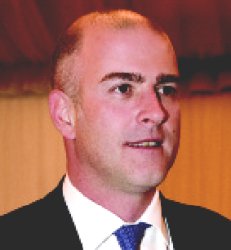
It?s time for arts organisations to start employing disabled people, says Steve Mannix.
Government research estimates that 20% of the adult population in the UK is disabled. This may surprise and even shock many people, but what is even more startling is that disabled people make up only 2% of those working in the arts and creative industries. Why such a huge discrepancy? Could it be down to cost? According to the Disability Rights Commission, the average cost of adapting the workplace to make it accessible for a disabled employee is just £100. Even if costs are greater, schemes like Access to Work will pay for the cost of equipment or support workers. Lack of adequate legislation can?t be blamed either; for several years now, the Disability Discrimination Act has made it illegal to not be a potential employer of disabled people. Neither is it the case that disabled people don?t have the skills or enthusiasm. Disabled people have an enormous amount to offer in the workplace.
Things are beginning to change; more disabled people are employed now than ever before, but change is very slow. The simple truth is that many employers, even those in the arts, are still not seeing the untapped potential of disabled people. Picture the scene; an individual comes for a job interview after being short-listed on the merits of their experience and qualifications. On entering the room, it quickly becomes apparent that they have limited mobility. The manager conducting the interview is a modern and enlightened individual who would never consider him- or herself to be prejudiced; but a thousand questions suddenly flash through their mind. Can this person use a keyboard? Will I need to employ a support worker? How do I refer to this person? What about health and safety? The list goes on and on. Before the interview has even begun, the interviewer?s mind is already full of fear and doubt. Despite the existence of legislation, information and other resources, sadly the odds can be, and often are, stacked against this candidate. The scenario is fictitious, but certainly not unrealistic. We are aware of several cases in the arts where disabled people have experienced this sort of discrimination. It is commonplace. One colleague of mine had 16 unsuccessful interviews for jobs that he was very well qualified for, prior to joining Shape. In reality, it is very, very rare for a disabled person to apply for a job that they are unable to do because of their disability. Forget skills for a moment, think about it ? who in their right minds would seriously interview for a job knowing that they couldn?t do any of it? Simple and inexpensive adaptations can almost always be made.
Advances in technology, educational opportunities and legislation have all contributed to the eroding of the historic barriers that have prevented disabled people from accessing the workplace. The biggest remaining obstacle is attitude. If attitudes are to change, it is vital that everyone in your organisation understands the real issues. A useful tool in achieving this is training provided by disabled and deaf people themselves. Across the country, disability equality training is widely available and can make a real difference. We have seen arts organisations that have attended Shape?s training programme start to change their culture overnight. Managers and directors sit in a room with front of house staff talking about their concerns in an open and honest way. As people become more familiar with issues around disability, their fears really do start to evaporate and, with them, so do the barriers. This empowers employers and employees alike to create change whilst sending out an important message, both internally and externally, that the organisation is inclusive and welcoming and that you celebrate difference.
This is vital. We in the arts know that as employers we should attempt to reflect the diversity of the community we hope to serve or work with ? and this includes disabled people. It?s well known that disabled people are under-represented in audiences and we at Shape know that arts organisations are keen to rectify this. But before arts organisations can expect to see an increase in the numbers of disabled and deaf people in their audiences, they will need to start counting many more deaf and disabled people among their staff.

Steve Mannix is Chief Executive of Shape.
t: 020 7619 6160;
e: steve@shapearts.org.uk;
w: http://www.shapearts.org.uk



